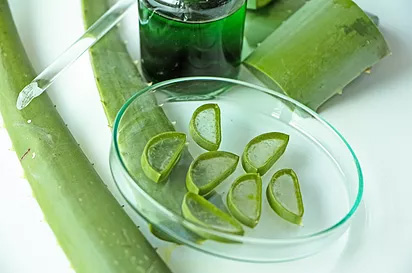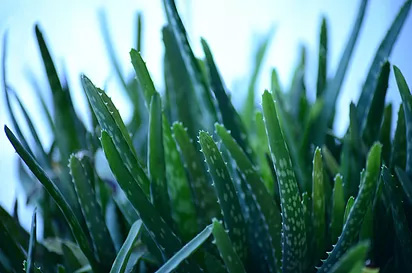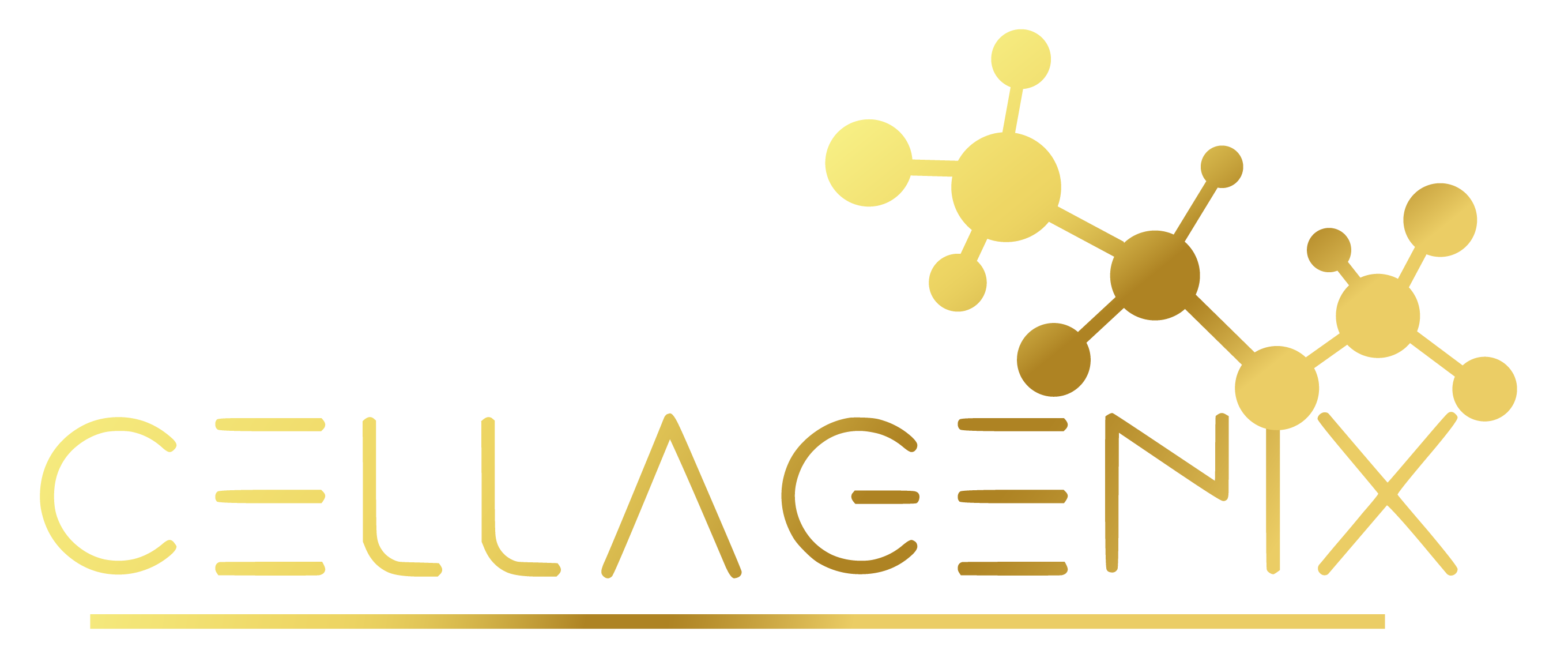WHAT IS ALOE VERA?
Aloe Vera is a water storing succulent that has potent healing properties for the skin and body. Aloe has been used for its medicinal properties for millenia in countries like Greece, India, Mexico, Japan, China and Egypt. The Egyptians revered it so much that they coined it “the plant of immortality.” Famous rulers ranging from Cleaopatra and Nefertiti used it in their beauty regimes, while Alexander the Great, and Christopher Columbus used it to treat soldiers’ wounds. In modern times, researchers studied Aloe and confirmed that it does have intensive healing powers.
WHY IS ALOE SO EFFECTIVE IN HEALING?
Aloe Vera is packed with 75 different types of vitamins, enzymes, minerals, sugars, lignin, saponins, salicylic acids and amino acids which have powerful healing properties both for the body and the skin.


WHAT ARE THE BENEFITS TO THE SKIN?
Aloe vera provides extensive benefits to the skin including anti-inflammatory, anti-aging, antiseptic, and healing properties.
Anti-Inflammatory, Antiseptic, Antibacterial Properties:
The hormones Auxins and Gibberellins (naturally occurring in the Aloe plant) were found to have anti-inflammatory and wound healing properties for the skin. Aloe is also a powerful antiseptic agent for the skin because it contains 6 different antiseptic agents such as lupeol, salicylic acid, urea nitrogen, cinnamic acid, phenols and sulfur. These components all have inhibitory action on fungi, bacteria and viruses.
Anti-Aging & Healing:
WHAT ARE THE BENEFITS OF ALOE TO THE BODY?
Aloe Vera has many benefits to the body as a whole. It enhances immune function, has analgesic, antibacterial, laxative, and antiviral properties, and has even been shown to have anticancer properties.
Enhanced Immune Function:
Aloe has 23 polypeptides that stimulate the immune system by activating mast cells. Mast cells are typically the immunological first responders to infection and they play a pivotal role in the host defence against pathogens. This pathogen defense helps the immune system fight off disease more efficiently.
Aloe is also known to help decrease pain because it has analgesic (pain relieving) properties due to plant derived steroids such as lupeol. The gel must be applied topically directly to the inflamed area for most effective results.
Anticancer Properties:
Aloe has 23 polypeptides that stimulate the immune system by activating mast cells. Mast cells are typically the immunological first responders to infection and they play a pivotal role in the host defence against pathogens. This pathogen defense helps the immune system fight off disease more efficiently.
Aloe is also known to help decrease pain because it has analgesic (pain relieving) properties due to plant derived steroids such as lupeol. The gel must be applied topically directly to the inflamed area for most effective results.
Aloe Vera has polysaccharides that increase white blood cell count which helps attack and fight cancer. White Blood Cells are important because they regulate our bodies immune response by activating our immune cells and killing infected host cells.
A study conducted by the University of Texas and Fukuyama University found that a polysaccharide called acelated mannose, doubles the number of white blood cells (both “killer” and “helper” T-cells) within three weeks.
Another study, published in The Journal of Clinical and Translational Research, found that Aloe-emodin (the gel that is found in the sap and leaves of Aloe vera) is both strongly antiviral and can kill tumor cells all on its own. It disrupts and kills cancer cells, stops the spread of cancer, cuts off the blood supply of tumors, and strengthens the body’s immune system.
Researchers found that aloe also boosts two of the body’s strongest antioxidants, Superoxide dismutase (SOD) and glutathione. 3 This is important because antioxidants help protect from free radical damage. Free radicals are very dangerous to the body because they can turn healthy cells into cancer cells. High glutathione levels are important to the body’s health because they are known to prevent illness, slow aging and reduce cancer risk.
If you are interested in adding Aloe products to your beauty regimen, check out Cellagenix’s clean, anti-aging, biofermented skincare creme’s products containing Aloe Vera. They are: CellaFirm Day Creme and CellaFirm Night Creme.
Medical Information and Advice: It is not the intention of Cellagenix to provide specific medical advice but rather to provide users with information to better understand their health and their diagnosed disorders. Specific medical advice will not be provided, and Cellagenix urges you to consult with a qualified physician for diagnosis and for answers to your personal questions.
References:
Atherton P. Aloe vera revisited. Br J Phytother. 1998;4:76–83. [Google Scholar]
5. Shelton M. Aloe vera, its chemical and therapeutic properties. Int J Dermatol.
1991;30:679–83. [PubMed] [Google Scholar]
Atherton P. The essential Aloe vera: The actions and the evidence. 2nd ed 1997. [Google
Scholar]
Ahirwar K, Jain S. “Aloe-emodin novel anticancer Herbal Drug.” International Journal of
Phytomedicine
Chen R, Zhang J, Hu Y, Wang S, Chen M, Wang Y. “Potential antineoplastic effects of Aloe-emodin: a comprehensive review.” Am J Chin Med. 2014;42(2):275-88.
Chen R, Wang S, Zhang J, Chen M, Wang Y. “Aloe-emodin loaded solid lipid nanoparticles: formulation design and in vitro anti-cancer study.” Drug Deliv. 2014. Epub ahead of print.
Chithra R Sajithlal GB, Chandrakasan G. Influence of aloe vera on collagen characteristics in healing dermal wounds in rats. Mol Cell Biochem. 1998;181:71–6. [PubMed] [Google Scholar]
Du Plessis L, Hamman J. “In vitro evaluation of the cytotoxic and apoptogenic properties of Aloe whole leaf and gel materials.” Drug Chem Toxicol. 2014;37(2):169-77.
Hutter JA, Salmon M, Stavinoha WB, Satsangi N, Williams RF, Streeper RT, et al. Anti-inflammatory C-glucosyl chromone from Aloe barbadensis. J Nat Prod. 1996;59:541–3.
[PubMed] [Google Scholar]
Kaithwas G, Singh P, Bhatia D. “Evaluation of in vitro and in vivo antioxidant potential of polysaccharides from Aloe vera (Aloe barbadensis Miller) gel.” Drug Chem Toxicol. 2014;37(2):135-43.
7. Ro JY, Lee B, Kim JY, Chung Y, Chung MH, Lee SK, et al. Inhibitory mechanism of aloe single component (Alprogen) on mediator release in guinea pig lung mast cells activated with specific antigen-antibody reactions. J Pharmacol Exp Ther. 2000;292:114–21. [PubMed]
[Google Scholar]
Roberts DB, Travis EL. Acemannan-containing wound dressing gel reduces radiation-induced skin reactions in C3H mice. Int J Radiat Oncol Biol Phys. 1995;32:1047–52. [PubMed]
[Google Scholar]
Sato Y, Ohta S, Shinoda M. Studies on chemical protectors against radiation XXXI: Protective effects of Aloe arborescens on skin injury induced by x-irradiation. Yakugaku Zasshi. 1990;110:876–84. [PubMed] [Google Scholar]
Sydiskis RJ, Owen DG, Lohr JL, Rosler KH, Blomster RN. Inactivation of enveloped viruses by anthraquinones extracted from plants. Antimicrob Agents Chemother. 1991;35:2463–6. [PMC free article] [PubMed] [Google Scholar]
West DP, Zhu YF. Evaluation of aloe vera gel gloves in the treatment of dry skin associated with occupational exposure. Am J Infect Control. 2003;31:40–2. [PubMed] [Google Scholar]
Zanini S, Marzotto M, Giovinazzo F, Bassi C, Bellavite P. “Effects of Dietary Components on Cancer of the Digestive System.” Crit Rev Food Sci Nutr. 2014. Epub ahead of print.
